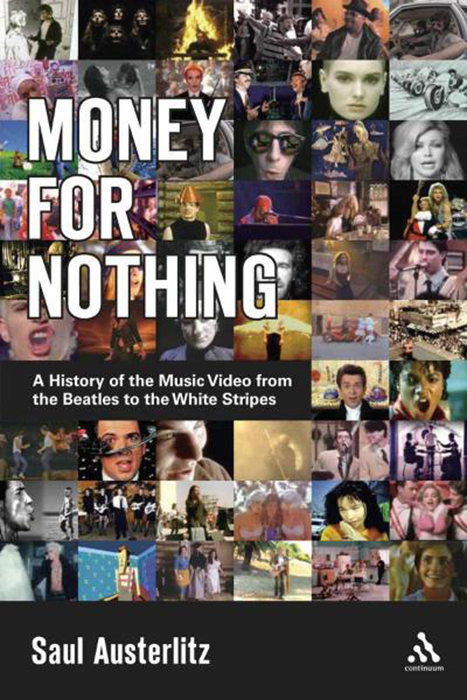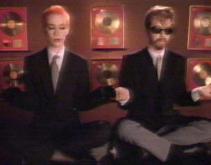Money for Nothing
A History of the Music Video from the Beatles to the White Stripes
Exclusive excepts from the book by Saul Austerlitz, 2007

Saul Austerlitz’s 2007 book, “Money for Nothing – A History of the Music Video from the Beatles to the White Stripes” provides a much-needed critical assessment of the genre of music video-making in the 1960s and 1970s, its MTV-fueled explosion in the early 1980s, and its subsequent decline and recent re-birth. Austerlitz’s commentary is always engaging, articulate, and thought-provoking. I asked Mr. Austerlitz if I could publish a few excerpts of his comments on Eurythmics from the book, and he graciously agreed.
“…The elaborate Rube Goldberg contraption animating Annie Lennox’s head in the video for “Missionary Man” (1986) only made explicit what almost all the Eurythmics’ videos made their implicit theme: the constructed nature of personality, and by extension, femininity. In their videos for “Love Is A Stranger” (1982) and “Beethoven” (1987), Lennox makes high drama out of removing her wig, taking off the glam, ice-queen persona as easily as she had put it on. The Eurythmics’ videos were clashes of ideas, positions, and personae, starring Lennox the chameleon able to take on a multiplicity of roles and share the transformation with us. Unlike Madonna, who changed between one video and the next, Lennox made transformation an essential part of the videos themselves. By taking off her costumes, literally and metaphorically, Lennox ushered her fans behind the curtain of stardom’s metamorphoses. Whether sexpot or dowdy housewife, feminine object of yuppie affection or butch male impersonator, Lennox turned the process of changing form into the mask she wore.”
“Sweet Dreams (Are Made of This)” (1983) juxtaposes locales, not personae, switching Lennox and bandmate Dave Stewart at will between a corporate boardroom and a rural field. The two worlds increasingly intermingled over the course of the video, like an update of “Shock the Monkey”, with a cow strolling around the conference room table and Stewart hunched over his computer, surrounded by snacking cattle. Lennox is an odd mixture of androgynous corporate cool and pixyish sexual heat, her masculine business suit and carrot-colored hair implying that no matter the context, Lennox would simultaneously fit in and stand out.”

Missionary Man (1986)

Beethoven (1987)

Sweet Dreams (1983)
Money for Nothing – A History of the Music Video from the Beatles to the White Stripes is available for purchase from Amazon.com

